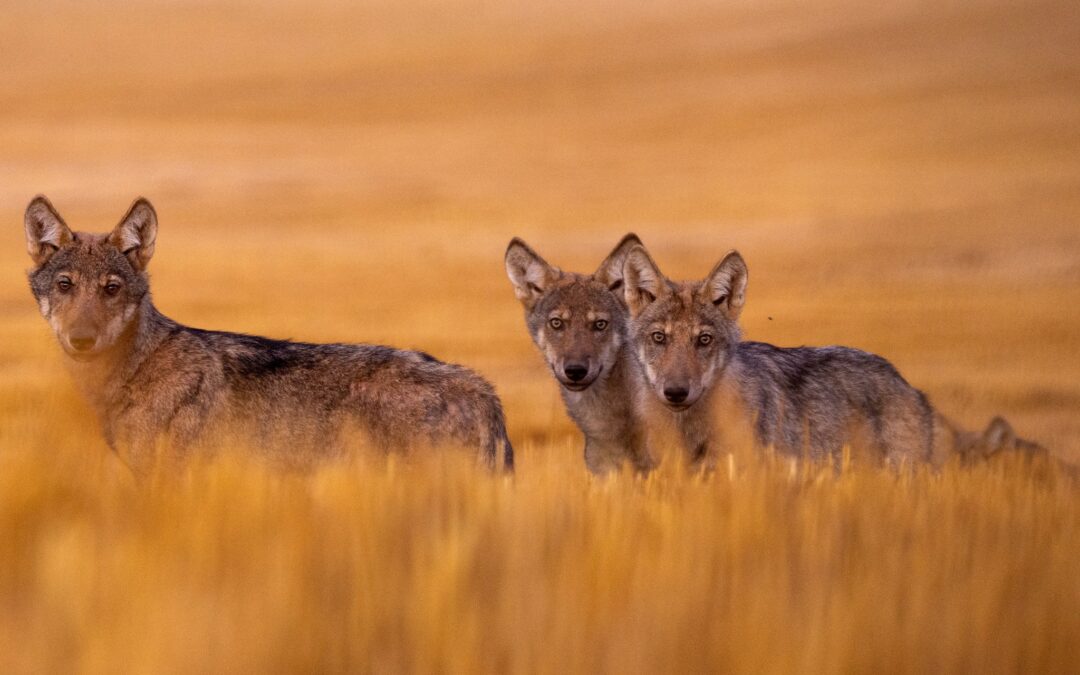A pack of wolves has recently settled in the Kampinos National Park on the outskirts of Warsaw, as the species continues to rebound in Poland after being granted strict protection in 1998.
The animals had previously been culled to near extinction before and after World War Two. While that is no longer a threat, conservationists are now concerned about cases of live wolf cubs being taken by members of the public.
Kampinos, which is nestled on the northwestern outskirts of the capital, less than 20 kilometres from the city centre, is home to a wide range of wildlife. Among the thousands of species of animals found there, many have been successfully reintroduced in recent decades, including moose, beavers and lynx.
it's getting hot in here… #moose #splash in Kampinos National Park! #Alcesalces #wildlife #Poland #cameratrapping #cameratrap #animals #forest #nature pic.twitter.com/9O3V0KQzXs
— 🌲🏙🇮🇹 Michela Corsini 🇵🇱🏙🌲 (@RealKea89) June 15, 2020
The park’s inhabitants had already included one wolf pack. But the recent discovery of a second came as a surprise, reports Gazeta Wyborcza.
It had been believed that the 385 square kilometre area of the park would only suffice for a single pack, given that they each usually occupy an area of 250 square kilometres.
However, the numbers of other species that wolves hunt – usually the main limiting factor for a population – have also increased in the Kampinos forest, providing ample food for the newcomers. According to Statistics Poland (GUS), a state agency, there are around 3,300 roe deer, 380 red deer and 360 elk living in the park.
Scientists are now looking into where the new wolf pack came from. They are also exploring how often the two packs interact with each other, with one residing in the park’s east and the other in the west.
With the addition of the newcomers, the total number of wolves in the Kampinos stands between ten and 20. A more accurate estimate will only be possible in the winter – by tallying tracks in the snow.
Wilk Kampinos został ojcemKampinos – wilk z pierwszego miotu szczeniąt urodzonych po kilkudziesięciu latach w Puszczy…
Opublikowany przez Stowarzyszenie dla Natury "Wilk" Piątek, 4 września 2020
Five years ago, the park had its first new litter of wolf cubs in several decades. Last week, Wilk, a wildlife association, reported that one of those cubs, who was rehabilitated after a near-fatal clash with a car, has now had a litter of his own.
The organisation has warned, however, that, despite wolves being under strict protection in Poland, there have been reports of cubs being stolen from the forest.
There are two likely reasons for this, according to Sabina Pierużek-Nowak from the Wilk association, quoted by Gazeta Wyborcza. First, there is the financial motivation of those seeking to breed the wolves with dogs and sell the hybrids.
Second, there are those seeking to naively help the cubs. But this is both illegal and harmful to the animals, which are usually capable of finding their pack on their own, warns Pierużek-Nowak.
In a recent case in the village of Dąbrowa Biskupia in northern Poland, a wolf cub had tagged along with a family for a few weeks. As a result, it became dependant on humans and was no longer able to return to the wild. Instead, it has now been resettled at the Bydgoszcz Zoo.
A riveting tail
Over the past century, the fortune of wolves in Poland has changed several times. In the interwar period, they were initially a protected species, which helped keep deer, boar and hare populations in check, reports Gazeta Wyborcza.
However, following protests from those who saw wolves as pests – mainly in the country’s eastern borderlands – they were reclassified as a game species in 1927. Numbers dwindled as a result, and only with the onset of the war were wolves again free to roam the country’s forests.
As the Wilk (meaning “wolf”), a mine-laying submarine of the Polish Navy, evaded German defences in the Baltic and made its way to Britain in 1939, real wolves re-entered forests in Poland were they had previously been hunted to extinction.
After the war, however, Poland’s new communist authorities launched a cull in 1955, providing subsidised hunting equipment and offering a hefty cash reward for each kill. A slaughtered wolf cub at the time was worth the equivalent of eight kilograms of pork or seven litres of vodka, calculates Gazeta Wyborcza.
Approximately 1,435 wolves were killed between 1955 and 1959, of which around 300 were poisoned with phenobarbital, a barbiturate.
In 1960, with only around 250 of the animals remaining, the government launched a renewed campaign to wipe them out, following in the footsteps of the Soviet Union’s efforts to cull wolves. New cash prizes were offered for spotting or poisoning the animals, with regional commissars responsible for overseeing efforts in their districts.
As a result, numbers had dropped to just 100 by the 1970s, with the remaining packs living in the Bieszczady and Beskidy mountains in southeastern Poland.
After the fall of communism, some protection was again extended to wolves in 1992. Full protection was granted in all but three provinces in 1995, and then extended to the whole country in 1998.
By 2011, GUS estimated that there were 913 wolves living in Poland, of which over a third were in the southeastern Podkarpackie Province. Since then, they have also re-emerged in the country’s north and west – from where they have crossed to Germany and Denmark, reports Gazeta Wyborcza.
Amid these growing numbers, there have been calls from some organisations for hunting of wolves to once again be permitted.
Main image credit: © Exen/Twitter

Maria Wilczek is deputy editor of Notes from Poland. She is a regular writer for The Times, The Economist and Al Jazeera English, and has also featured in Foreign Policy, Politico Europe, The Spectator and Gazeta Wyborcza.




















